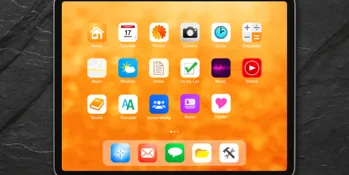- Quick Summary
- Understanding Your Grocery Bill
- Create a Grocery Budget
- Create a Meal Plan to Save Money
- Plan Before You Shop
- Use a Grocery List App
- Shop at Discount Grocery Stores
- Is Buying Generic Food a Good Way to Save?
- Shop Online for Groceries
- Run to Convenience Stores for Small Items
- How to Pay for Groceries
- Don't Waste Food
- Ignore Eye Level Groceries, End Caps, and Grouping
- Check Unit Prices
- Buy Frozen Vegetables and Fruit
- Frequently Asked Questions
- Conclusion

- Quick Summary
- Understanding Your Grocery Bill
- Create a Grocery Budget
- Create a Meal Plan to Save Money
- Plan Before You Shop
- Use a Grocery List App
- Shop at Discount Grocery Stores
- Is Buying Generic Food a Good Way to Save?
- Shop Online for Groceries
- Run to Convenience Stores for Small Items
- How to Pay for Groceries
- Don't Waste Food
- Ignore Eye Level Groceries, End Caps, and Grouping
- Check Unit Prices
- Buy Frozen Vegetables and Fruit
- Frequently Asked Questions
- Conclusion
In 2023, food prices increased by 5.8 percent, on top of the increase in previous years. With food costs continuing to climb, it’s imperative that you make every dollar count at the grocery store. Learning the best way to save money on groceries is necessary to eat well and stay within budget.
Understanding Your Grocery Bill
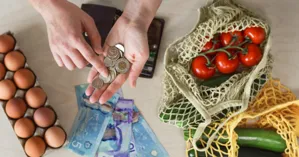
Understanding your grocery bill is crucial to saving money on groceries. The average cost of monthly groceries varies depending on the number of people in the household and their dietary preferences. According to the United States Department of Agriculture (USDA), the average monthly grocery bill for a family of four with two children under the age of 5 is around $711.30. For a family of four with two children between the ages of 6 and 11, the average monthly grocery bill is around $840.90.
Knowing these benchmarks can help you gauge whether your grocery spending is in line with national averages. If you find that your grocery bill is significantly higher, it might be time to reassess your shopping habits and look for ways to cut costs. By understanding your grocery bill, you can make informed decisions and take steps to save money on groceries.
Create a Grocery Budget

You’ll first want to create a budget to save money grocery shopping. You should already have a household budget if you don’t, back up and develop that first.
Once you have a household budget, start working on your grocery store budget. There are several things you need to consider. They are:
- lifestyle
- dietary preferences
- number of people in household
Generally, you should allocate ten to 15 percent of your income to food expenses. Regularly review and adjust this so it aligns with your overall budget. Allocating a specific amount for your weekly groceries can help you stay within your budget.
And although you’ll be budgeting for the essentials, keep in mind you’re only human. You’re going to have an impulse buy once in a while. Put that in your budget. If your budget is $200 per week, set aside $25 for impulse buys.
Create a Meal Plan to Save Money
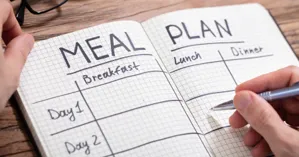
Creating a meal plan is an effective way to save money on groceries. By planning your meals in advance, you can avoid buying unnecessary items and reduce food waste. Here are some tips to help you create a meal plan that saves you money:
- Plan Your Meals for the Week: Start by planning your meals for the entire week. This will help you determine what ingredients you need to buy and prevent last-minute trips to the store.
- Check Your Inventory: Before making your shopping list, check what ingredients you already have in your pantry, fridge, and freezer. This will help you avoid buying duplicate items and use up what you already have.
- Incorporate Leftovers: Plan meals that can be made in larger quantities and used as leftovers. This not only saves time but also reduces food waste.
- Choose Budget-Friendly Recipes: Opt for recipes that use affordable ingredients and can be made in bulk. This will help you stretch your grocery budget further.
By following these tips, you can create a meal plan that helps you save money on groceries and reduce food waste.
Plan Before You Shop
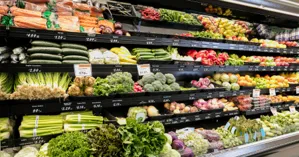
Don’t go into the store and start grabbing items; plan your shopping trips carefully. Take the time to plan what meals you want to create for the next two weeks—note we said two. The less you’re in the grocery store, the less you’ll spend.
See what food you already have. In other words, take an inventory of the food in your kitchen. Once you do that, look at your recipes and use grocery shopping to supplement what you already have.
Use the recipes to plan your meals for the next two weeks. Don’t forget breakfast and lunch, you’ll need to factor that into the plan.
As part of your plan, consider making larger meals and planning to eat leftovers. That way, when you’re short on time, you can just heat them up in the microwave.
Look at your calendar and determine which days you’ll be on the run. That’s when these leftovers will come in handy. You can also make meals ahead that you can simply reheat.
Jot down foods you need as you go. Put them on your phone or on the fridge, so you can keep a running track of staples that you need.
Make sure you eye it critically before you go shopping with it. Do the items mesh with the meals you’re planning for the next two weeks? If not, then take them off the list.
Make a Shopping List to Reduce Grocery Bill
Making a shopping list is an essential step in creating a meal plan that saves you money. By writing down the ingredients you need for each meal, you can avoid buying unnecessary items and reduce your grocery bill. Here are some tips to help you make a shopping list that reduces your grocery bill:
- Plan Your Meals for the Week: Before you make your shopping list, plan your meals for the week. This will help you determine what ingredients you need to buy.
- Check What You Already Have: Before you go shopping, check what ingredients you already have in your pantry, fridge, and freezer. This will help you avoid buying duplicate items.
- Make a List of the Ingredients You Need: Once you have planned your meals and checked what you already have, make a list of the ingredients you need to buy.
- Stick to Your List: When you go shopping, stick to your list. Avoid buying unnecessary items that are not on your list.
By making a shopping list and sticking to it, you can reduce your grocery bill and avoid impulse purchases.
Use a Grocery List App
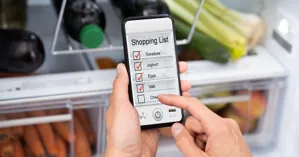
There are grocery apps available that help with your planning. Some of them even give you coupons. Many of these apps also offer the convenience of ordering groceries online, helping you avoid impulse purchases and stick to your budget.
AnyList
AnyList helps keep an organized list that you can share with anyone. You can add items as you’re going through your fridge without writing them down. It also keeps an idea list and a chore list.
ShopWell
ShopWell helps with nutrition labels. It lets you know if an item is a good source of:
-
protein
-
carbs
-
fiber
You create a profile and enter nutrition goals. You simply scan the barcode at the store. It will match the item with your nutrition goals or show you if the item isn’t right for you.
This saves you from wasting money on items you don’t want.
Buy Me a Pie
Buy Me a Pie will sort your list by aisle, so you don’t have to double back for items. This keeps you from being tempted by other items you shouldn’t buy.
This app lets you specify the amount of ingredients you need. This way you don't overbuy.
Out of Milk
Out of Milk is a pantry list that lets you know when specific items you need are low.
We like that you can scan items you already have and know what they cost the last time you bought them. That way, you can double-check the current price and either go to another store or adjust your list.
Key Ring
Key Ring lets you organize all your loyalty and reward memberships in one app. It also uses your location to find deals nearby. This is an especially great app to use if you’re on vacation and need to shop for groceries.
Shop at Discount Grocery Stores
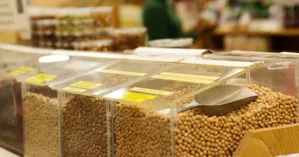
Discount grocery stores are a great way to save. Make it a point to find one in your area. Some, like Aldi, have store brands that are inexpensive and taste good. But don't buy something just because it's inexpensive. Ensure you truly need the item.
Join a Warehouse or Wholesale Club
Join a warehouse or wholesale club to get the best deals on staples that you use daily. If your kids only eat cereal for breakfast, it's a lot less expensive at Sams's than at the local grocery store.
But these places have all kinds of goodies, so ensure you only buy what's on the list.
Compare Store Prices
Just because a store says its discount isn’t always the truth. Some items might cost more. Take the time to check prices. You can do this by going on their websites and comparing. Start with the staples. For example, what’s the difference in the price of ketchup between stores? How much is the going rate for flour?
By looking up the prices you could save a lot and put the extra money toward other items.
Is Buying Generic Food a Good Way to Save?
Buying generic food is often a good way to save on your grocery bill. Generic foods are generally priced less than name-brand items. However, ensure you check the ingredients of generic foods and compare them to name-brand foods. Some generic foods contain more preservatives, high levels of fructose corn syrup, or MSG. Making informed grocery purchases can significantly reduce your overall expenses.
When you go to the grocery store with your list, buying healthy is important, but breaking the budget could hurt. It’s imperative to shop smart. We’re here to help. Here are numerous ways to save money on groceries.
Shop Online for Groceries
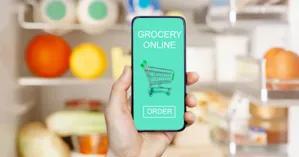
Speaking of going online, start shopping online for groceries. Keep in mind that if you can’t smell those cookies from the bakery, you probably won’t buy them if they’re not on your grocery list.
The less time you spend in grocery stores, the fewer items you’ll buy. Most people run up their bills through impulse buying. Or they may see a sale on something they don’t really need but want.
If you’re not in the store, you won’t buy, and you’ll save money.
Use Curbside or Grocery Delivery
Most grocery stores have curbside pickup. As we just mentioned, you can order online and simply pick it up. This way, you won't have to go into the store, and you'll save delivery costs.
If you’re someone who just can’t help yourself and you have a busy lifestyle, consider grocery delivery services like:
But before you sign up for a delivery service, crunch the numbers. If there's a yearly fee and large delivery charges, it could defeat the purpose. Figure out how much it costs and how much money you'll save by not going to the store.
Curbside pickup may be the best option.
Run to Convenience Stores for Small Items

Convenience stores are known for high prices so that this one may sound a little crazy. But if you only need one item, run into a convenience store.
That way, you don't have to go all the way through the grocery store for a carton of milk. You'll go in for that one item and come out with five.
You won't do that at a convenience store; you'll probably only buy the milk. You'll spend a few extra cents to save a few dollars.
How to Pay for Groceries

Paying for groceries is inevitable, but there are different ways to spend that can actually save you money. From checking out your receipt to paying in cash, here are some tips to save when you check out at the register.
Watch the Register and Receipt
Grocery stores often offer discounted prices on various items. You assume they've entered the sale price in their system, but that's not always the case. Watch the register as the checker rings you up and question any price that's different from advertised.
If the sign on the item’s display case says one thing and the register says something different, point it out to the cashier. Mistakes are made, but you shouldn’t have to pay for them.
When you get home, take a hard look at your receipt. What are the expensive items you bought? Ask yourself if you could cut that item out or go for a less expensive alternative.
For example, can you replace hamburger with ground turkey. It’s healthier and less expensive.
Take a Calculator or Use Phone
Take a calculator or use your phone’s calculator to stay within budget. Don't fly blind through the grocery store. As you punch in numbers, round up. That way, you've figured in tax as part of the budget.
This may seem like a simple step, but it will keep you on track.
Grocery Store Loyalty Programs
Grocery store loyalty programs can be a great way to save money. Often, they'll have an enticing BOGO. But be careful with some of these deals. Make sure it's something you need and is on your list.
Sometimes, you can be convinced to buy something that you don't need.
If you don't need two of the products that's a BOGO, ask if you can buy one and get the deal. That way, it will be half off one product. You won't buy too much of something, and you'll still save money,
Sign Up for Cash Back and Coupon Programs
Cash back and coupon apps can save you money on groceries and other items. There are several cash back apps that can keep your budget intact. They include:
- Rakuten – up to 10% cash back
- Ibotta – cash back percentage depends on the retailer (offers coupons)
- Capital One Shopping – coupon app and browser extension
- Fetch – cash back receipt app
- RebatesMe – has “double cash back” offers on many stores
Download a couple and use them simultaneously. That way, you'll receive double the cash back.
Pay with Cash
Don’t use a debit or credit card. If your budget is $100, take a $100 in cash and use it. That’s where your calculator comes in handy. By using cash, you’ll only spend what you’ve budgeted for and ultimately save money.
Don't Waste Food

A typical four-person family can waste at least $1,500 yearly on food.
The Department of Agriculture has guidelines on how to store food. Their FoodKeeper app helps you understand food storage so you can maximize the items' freshness.
The longer you keep food fresh, the less likely you are to throw it away and waste it.
Ignore Eye Level Groceries, End Caps, and Grouping

Ignore Eye Level Groceries
There’s an old adage that says, "Eye level is buy level." Items at eye level tend to attract and hold your attention. They're also pricey. Retailers put the most expensive items on these shelves.
Pay attention to the top shelves and bottom shelves. You’ll probably find what you need without paying a stiff price.
Ignore the End Cap
Displays that highlight items between or at the end of the aisle are the end caps. This is a marketing tactic to add unnecessary items to your cart.
Don't grab them on a whim. Think about why you're grabbing them. Do you really need or want it? This could be your weekly impulse buy. But better yet, ignore it.
Ignore Grouping
When a store puts three or more related items together. The goal is to try to make you buy everything.
For example, they display chocolate syrup and sprinkles in the ice cream aisle to entice you to buy all three.
The store will often have a display like a cake mix and canned frosting, making it convenient for you to buy. Those salsa and chips look great together and could be the downfall of your budget very quickly.
You may have wanted to buy the chips in the first place, but now you’re convinced you need the additional item.
Don’t fall for it: just walk away.
Check Unit Prices

Just because something is on sale doesn’t mean it’s a deal. Be sure to check the unit price and compare the item against competing brands.
If the sell price unit comes to $0.70 and the competitor’s none sale price unit comes to $0.50, you’re not getting a deal with the sale item.
That goes for small and large products of the same type. A large package of paper towels should have a lower unit price than a smaller package, but this isn't always the case.
Compare unit prices among the same brand as well.
Buy Frozen Vegetables and Fruit
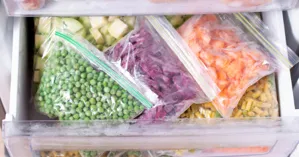
Consider buying frozen vegetables and fruit. They will hold up longer, so there will be less waste, and they are also more affordable.
Frozen vegetables and fruit are just as healthy as fresh. In fact, they may be more healthy. They are frozen shortly after harvest, which helps preserve nutrients. Fresh vegetables and fruit lose nutrients through:
-
transport
-
storage
-
preparation
Blanching vegetables before freezing retains phytonutrients like carotenoids and flavonoids. It also kills harmful bacteria and prevents:
-
loss of color
-
flavor
-
texture
They can be a great part of a healthy diet and are more economical.
TIP: Buy Produce in Season
If you must buy fresh fruits and vegetables, only buy them when they’re in season. They will be a lot more inexpensive if they’re out of season.
Also don’t buy pre-cut or package produce. Take it home and prepare it. You’ll save money.
For example, don't buy those salads that come with the dressing. Salad with your own salad dressing is just as good and cost less.
Frequently Asked Questions
We've discussed several ways to save money on groceries. Most of them, you'll note, involve planning. But in case our tricks weren't enough, we've answered some frequently asked questions.
Will curbside pickup save money on groceries?
Curbside pickup will save you money on groceries. You can shop online at your leisure. By taking your time, you’ll think about your purchases. And when you don’t go into the grocery store, you're less apt to make unneeded purchases.
What is the best way to save money at the grocery store?
The best way to save money at the grocery store is to create a budget and stick to it. Part of creating a budget is planning what menus you'll use for the week. Your food budget should be ten to 15 percent of your net income.
What does the unit price of food mean?
The unit price tells you the price of the product. This could be in ounces or pounds. Looking at unit prices helps you compare the price of different sized packages of food and different brands.
Conclusion: Save Money on Groceries
The two biggest ways to save money on groceries are through budgeting and planning meals. By creating a budget, you give yourself a guideline that prohibits you from spending money on items you don’t need.
Planning meals for the week or two weeks helps you stay within your budget.


